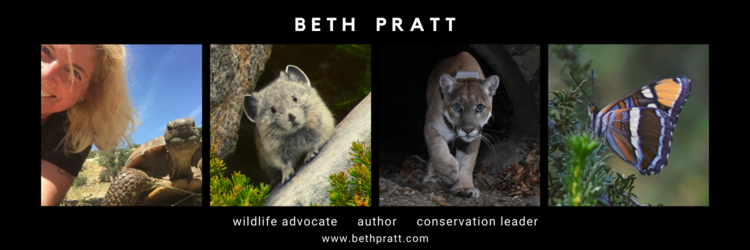 An alpine chipmunk (Tamias alpinus) is shown at Yosemite's Ten Lakes Pass at an elevation of 9,631 feet. (Risa Sargent photo)The Sierra Nevada is known for its chipmunk diversity--the central Sierra boasts nine species spanning its various regions--yet a recent study shows that climate change is threatening the genetic makeup of at least one of the animals, the high elevation dwelling alpine chipmunk, (Tamias alpinus).
An alpine chipmunk (Tamias alpinus) is shown at Yosemite's Ten Lakes Pass at an elevation of 9,631 feet. (Risa Sargent photo)The Sierra Nevada is known for its chipmunk diversity--the central Sierra boasts nine species spanning its various regions--yet a recent study shows that climate change is threatening the genetic makeup of at least one of the animals, the high elevation dwelling alpine chipmunk, (Tamias alpinus).
The alpine chipmunk is a species endemic to California's Sierra Nevada and historically was sighted at elevations as low as 7,800 feet. New research led by Emily Rubidge, while a Ph.D. student at UC Berkeley's Museum of Vertebrate Zoology and the Department of Environmental Science, Policy and Management, shows that the animals are moving over 1,500 feet upslope. This loss of geographic range was accompanied by a decrease in genetic diversity--which has serious implications for the future of the alpine chipmunk.
"Climate change is implicated as the cause of geographic shifts observed among birds, small mammals and plants, but this new work shows that, particularly for mountain species like the alpine chipmunk, such shifts can result in increasingly fragmented and genetically impoverished populations," said Rubidge, "Under continued warming, the alpine chipmunk could be on the trajectory towards becoming threatened or even extinct."
Almost a hundred years ago, Joseph Grinnell led a series of comprehensive biological surveys for Yosemite National Park, providing historical data which has been valuable for scientists today in studying the impacts of climate change on flora and fauna in the park. The Grinnell Resurvey Project, led by Craig Moritz, professor of integrative biology and director of the Museum of Vertebrate Zoology, found that many small mammals in Yosemite moved or retracted their ranges to higher, cooler elevations over the past century, a period when the average temperature in the park increased by 3 degrees Celsius, or about 5.4 degrees Fahrenheit.
“At the heart of this whole enterprise is the incredibly dense historic record and specimens we have at UC Berkeley from 100 years ago,” said Moritz. “These collections allow us to conduct sophisticated analyses to better understand how ecosystems are reacting to environmental changes, and to create more detailed models of future changes.”

















